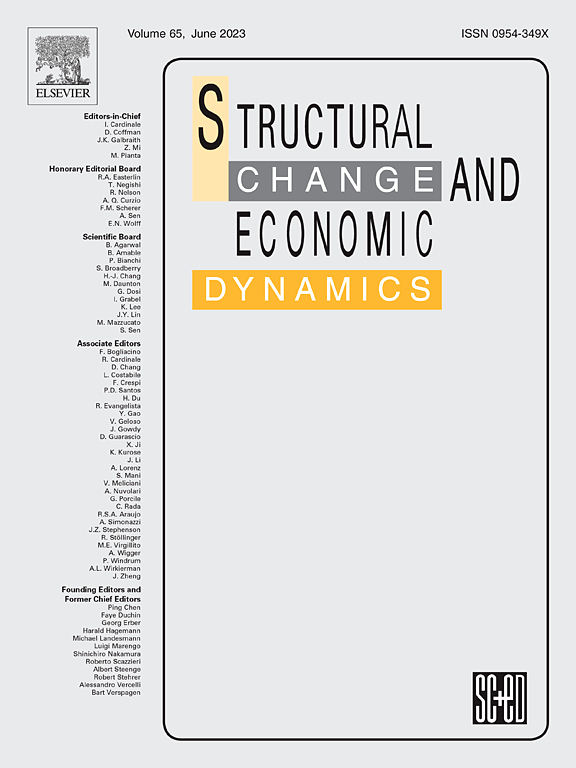Analyzing the environmental and economic impact of carbon pricing policy based on an improved dynamic CGE model: Incorporating demographic characteristics of resident
IF 5.5
2区 经济学
Q1 ECONOMICS
引用次数: 0
Abstract
Narrowing income inequality while ensuring emission reduction efficiency is essential for achieving social equity and enhancing feasibility of carbon reduction policies. Using China's carbon pricing policy as a case study, this paper evaluates the environmental and economic impacts of various carbon pricing strategies under different carbon market coverage scopes and revenue recycling schemes. To conduct this analysis, we employ an improved dynamic Computable General Equilibrium (CGE) model that classifies residents based on five distinct categories, i.e. gender, age, education level, registration status, and income level. The findings reveal that while carbon pricing reduces emissions, it negatively impacts social welfare and energy-intensive industries. Moreover, it exacerbates income inequality across different age groups, education levels, and registration status, despite contributing to a reduction in gender income inequality. From an efficiency perspective, prioritizing the inclusion of the building materials industry in the carbon market maximizes emission reduction effectiveness. In contrast, to mitigate income inequality, the petrochemical industry should be the first to be integrated into the carbon market. Additionally, the study finds that expanding industry coverage within the carbon market enhances overall emission reduction efficiency. Under the optimal efficiency scenario, redistributing carbon revenue to rural, low-income female residents aged 20–59 with junior high or associate degrees proves to be the most effective strategy for reducing income inequality.
基于改进的动态CGE模型的碳定价政策环境经济影响分析:考虑居民人口特征
在确保减排效率的同时缩小收入不平等,是实现社会公平和提高碳减排政策可行性的关键。本文以中国碳定价政策为例,评估了不同碳市场覆盖范围和收益回收机制下不同碳定价策略对环境和经济的影响。为了进行这一分析,我们采用了一种改进的动态可计算一般均衡(CGE)模型,该模型基于五个不同的类别,即性别、年龄、教育水平、登记状态和收入水平,对居民进行分类。研究结果表明,虽然碳定价减少了排放,但它对社会福利和能源密集型产业产生了负面影响。此外,它加剧了不同年龄组、教育水平和登记身份之间的收入不平等,尽管它有助于减少性别收入不平等。从效率的角度来看,优先将建材行业纳入碳市场可以最大限度地提高减排效果。相比之下,为了缓解收入不平等,石化行业应该首先被纳入碳市场。此外,研究发现,扩大碳市场内的行业覆盖范围可以提高整体减排效率。在最优效率情景下,将碳收入再分配给20-59岁具有初中或大专学历的农村低收入女性居民被证明是减少收入不平等的最有效策略。
本文章由计算机程序翻译,如有差异,请以英文原文为准。
求助全文
约1分钟内获得全文
求助全文
来源期刊

Structural Change and Economic Dynamics
ECONOMICS-
CiteScore
9.60
自引率
4.90%
发文量
159
期刊介绍:
Structural Change and Economic Dynamics publishes articles about theoretical, applied and methodological aspects of structural change in economic systems. The journal publishes work analysing dynamics and structural breaks in economic, technological, behavioural and institutional patterns.
 求助内容:
求助内容: 应助结果提醒方式:
应助结果提醒方式:


